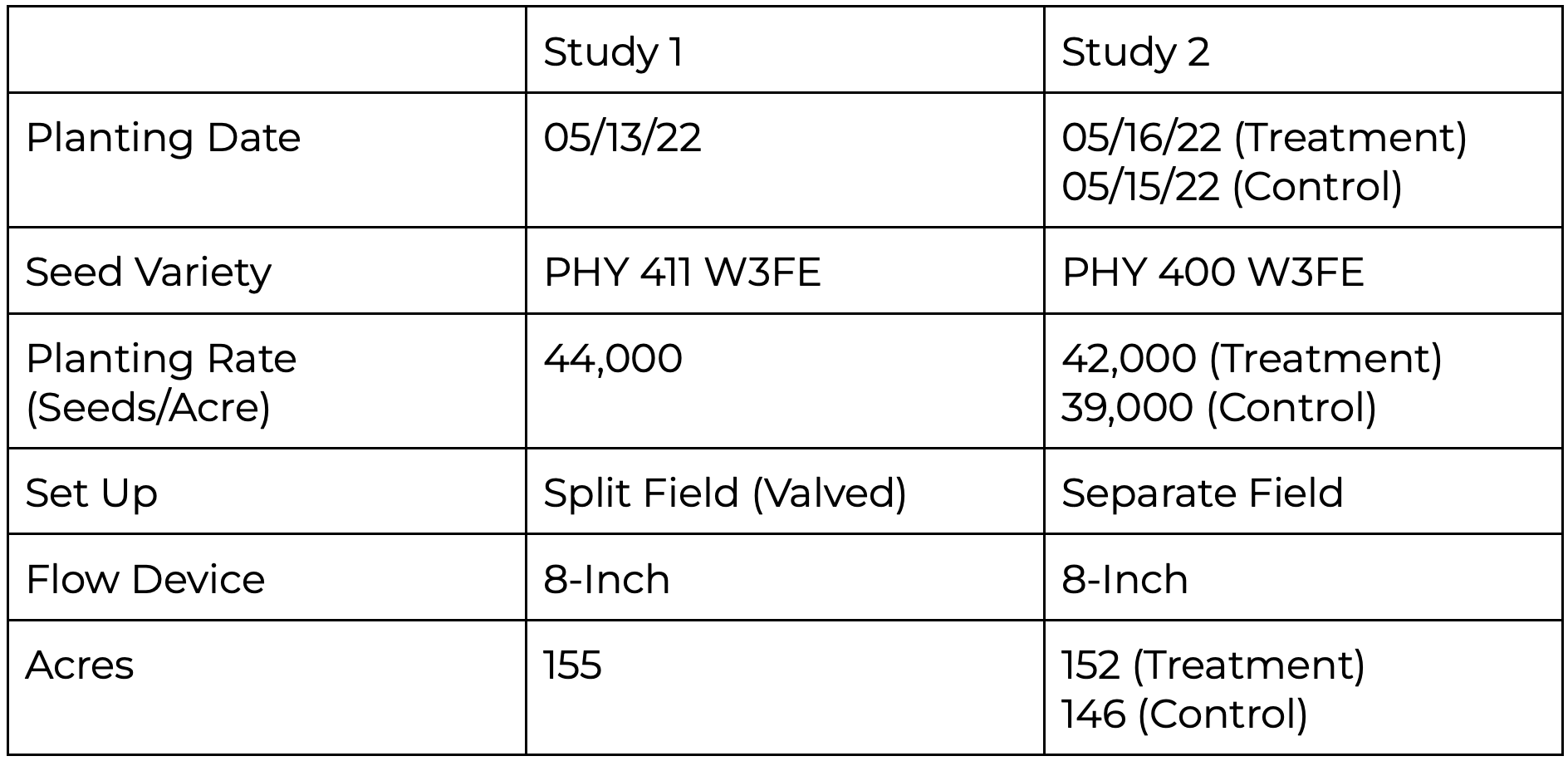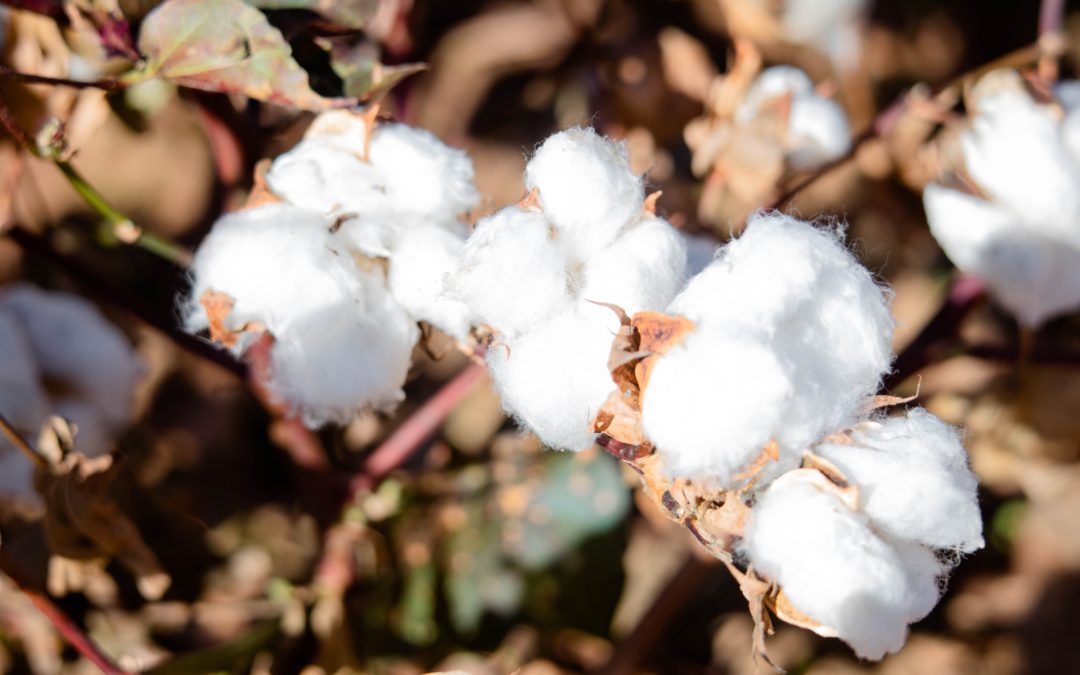BACKGROUND
Production Year: 2022
Location: Carnegie, OK
Study Type: Mid-Season Measurements
Program: UpTerra Water and Row Crop Advance Wellness

Note: The fields in Study 2 had hill and bottom ground so data was collected separately in each section to account for field variability
Challenge(s):
Soil compaction, crop immaturity
Goal(s):
Optimized plant development and increased boll retention
METHODS
- Mid-season cotton measurements were collected using industry standard methods.
- Soil type and slope were evaluated to confirm comparability between both fields (Figure 1)
- Planting rate and acreage were not significant factors in the study since the measurements focused on plant-specific indicators rather than the fields as a whole. Additionally, studies show little to no change in yield in relation to seeding rate differences under 8,000 seeds/acre in irrigated fields (via Iowa State University Extension Outreach & Texas A&M AgriLife Extension Agency).
- To assess plant development, the following measurements were collected: total length of top 5 internodes, average length of top five internodes, early vigor (ratio of height from cotyledonary node to first fruiting branch to number of nodes to first fruiting branch), plant height (inches), root length (inches), and number of bolls.
- Data collection zones were created with 100 ft buffers from field edges and other zones. All data was collected within these zones.
- Within each zone, 5 data collection points were established across the field to account for field variability. At each point, 5 measurements were collected for each data field and averaged to account for plant variability
- In total, 50 data points were evaluated for Study 1 and 80 data points for Study 2 per measurement type.
- A paired T-Test and Least Significant Difference analysis were performed on this data.
Weather
The growing season started with lower than average rainfall and higher than average temperatures. The temperatures consistently remained higher throughout the growing season, but rainfall was intermittent and came in either below or above the annual average. Rainfall remained inconsistent throughout the entirety of the growing season.
Soil Map Data

Study 1
Soils and elevations are consistent and even across each side of the field. Both soils consist of silt loams.

Study 2
The soils show a slight variance between slopes in the treated and control fields. However, the variances are minimal and soil textures are consistent enough across both fields that the fields acted as fair comparisons. Both fields consist of loams.
RESULTS
Boll Number Per Plant


The average boll number per plant increased 31.3% (treatment averaged 22.5 bolls and control 17.2 bolls). A paired samples t-test was conducted to determine the effect of UpTerra treatments on boll numbers. The results indicate a significant difference (alpha 0.1) between the number of bolls from plants with UpTerra treatment (M=22.5; SD=7.18) and number of bolls from plants without treatment (M=17.2; SD=4.40); [t(12) = 1.782, p = 0.023]. The average difference was 5.37, and the LSD was 3.66. This was likely in response to the TerraNet targets established before the start of the season to increase boll retention.
Internode Length


When comparing the treatment to control data points, the average internode length was reduced by 11.7% (treatment averaged 1.55 inches and control 1.75 inches). A paired sample t-test was conducted to determine the effect of UpTerra treatments on internode length. The results indicate a significant difference (alpha 0.1) between average internode length of UpTerra treatment (M=1.55; SD=0.29) and internode length without treatment (M=1.75; SD=0.25); [t(12) = 1.782, p = 0.012]. The average difference was -0.2048, and the LSD was 0.123. This was in response to the TerraNet target of reducing internode length. By optimizing internode length of the plants, it reduces the energy spent on vegetative growth, leading to improved boll production.
Root Length
The root length increased by 12.3% on the treated field (treatment averaged 10.8 inches and control 9.6 inches). A paired samples t-test was conducted to determine the effect of UpTerra treatments on root length. The results indicate a significant difference (alpha 0.1) between root length of UpTerra treatment (M=10.8; SD=1.66) root length and average without treatment (M=9.6; SD=1.16); [t(12) = 1.782, p = 0.055]. The average difference was 1.085, and the LSD was 0.991. The root length differences were not significant in the Study 1 field, where watering with the UpTerra System was only this season. However, both the bottom ground and hill ground in the Study 2 Treatment Field were significantly improved. Study 2 Treatment Field had the UpTerra System for two seasons, so the improvements may be additive.
Plant Height
Plant height differences were not significant except when comparing the data from the hill areas in the treatment and control of the Study 2 fields. In fact, the hill area saw significant improvements in many traits that were not significantly improved in the bottom area. We may see greater improvements in areas of increased stress (such as on the hill ground) than areas like the bottom ground with less stress. However, stress improvements can be difficult to measure because growers do their best to eliminate stresses in the fields.
CONCLUSION
The Mid-Season results indicate that the UpTerra System had a positive effect on boll number per plant and internode length, and varying effect on root length and plant height. The number of bolls per plant significantly increased compared to the control fields (+31.3% difference). Additionally, the total length of the top five internodes and the average internode lengths were both significantly shortened compared to the control fields (11.7% reduction). Significant differences in root length in Study 2 (multi-season study) but not in Study 1 (single-season study) indicate that improvements from the UpTerra System can be cumulative. When comparing control to treatment in the hill areas (higher stress) of Study 2, plant height differences were significant, which was not otherwise shown in the bottom area (lower stress). The findings from this case study align with assessments conducted on other cotton fields using the UpTerra System, demonstrating a consistent pattern of increased bolls, optimized internode lengths, and increased stress resilience. Moving forward, the UpTerra data team will continue to assess these fields and identify more ways to quantify changes in cotton production using the UpTerra System.

